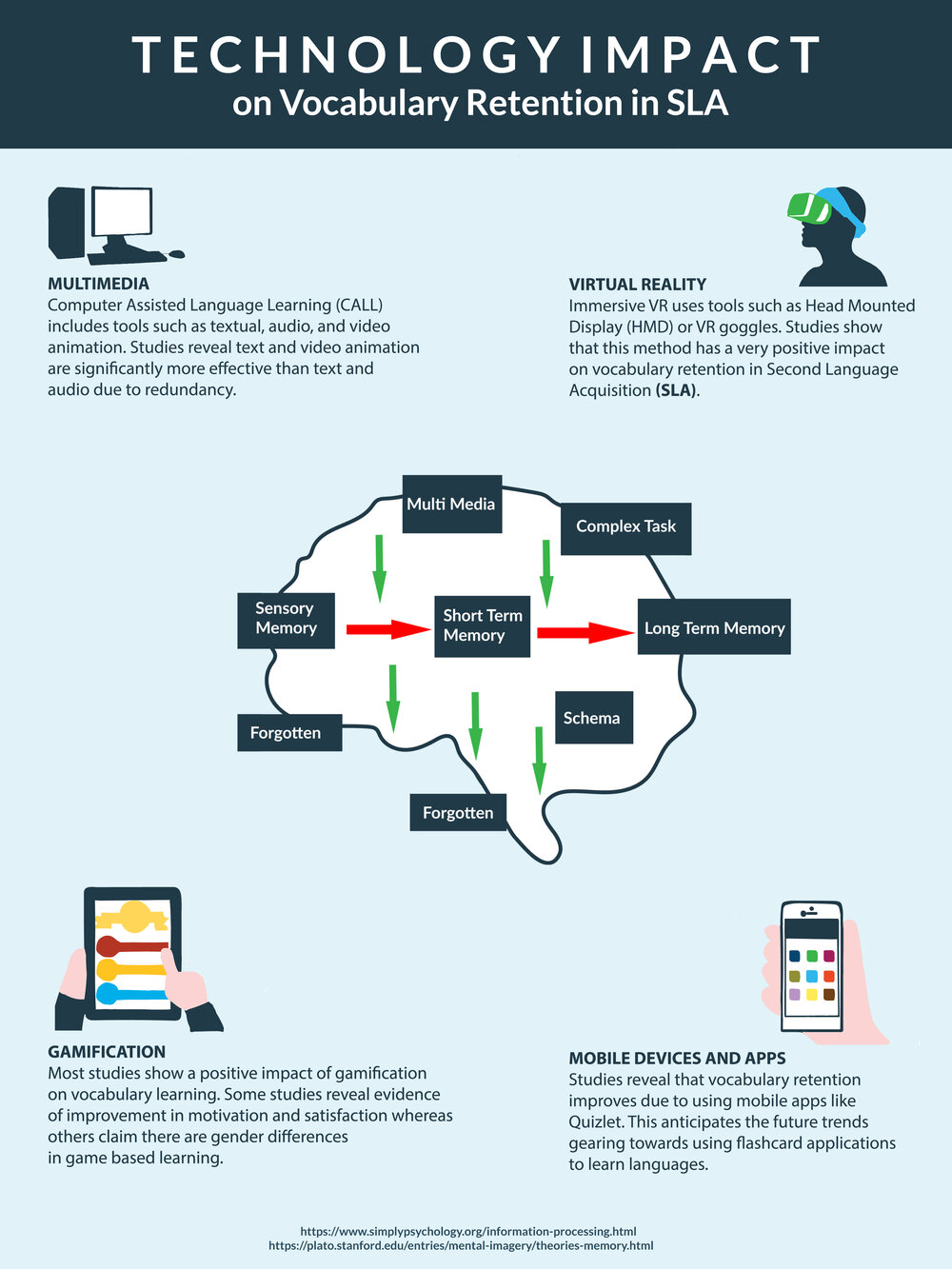Technology Impact on Vocabulary Retention in Second Language Acquisition
Adult Education and Human Resource Development
The purpose of this critical review is to examine current research studies related to effective and promising digital tools for Second Language Acquisition (SLA) to strengthen vocabulary retention. This review examines which tools are widely used with adult learners of English and other languages, examines the effectiveness of mobile technologies and devices, as well as the use of educational software, applications and gaming in vocabulary retention. Despite current interest in language learning, few attempts have been made to synthesize the current literature with a focus on adult language learning only, excluding children. There appears to be a critical gap in the literature considering child and adult language learning are fundamentally different (citation). This critical research review also provides a critique of the state of the adult language learning literature, outlines technology recommendations related to promising digital tools, and points to gaps future empirical work could address. Vocabulary knowledge represents the most important factor related to strengthening skills of effective communication (citation). Even with general knowledge of grammar and grammar concepts, learners still experience communication breakdown difficulties when faced with unknown words or expressions in conversation with native speakers, or while reading. Given the rapid technology development, vocabulary learning research has moved from conventional classrooms into Computer Assisted Language Learning CALL (citation). There is a persistent need to provide learners with the best possible learning strategies and technology to employ in order to make adult language learning as efficient and productive as possible. To better understand the issue presented, a critical or integrative review critiques, and synthesizes representative articles of a topic in an integrated way, such that new frameworks and perspectives on the topic are generated. This methodology is appropriate for this topic because the existing research is scattered across disparate areas and has not been systematically analyzed and integrated.

